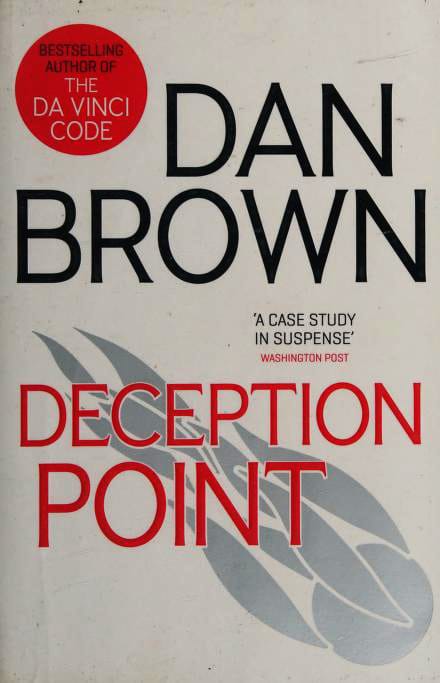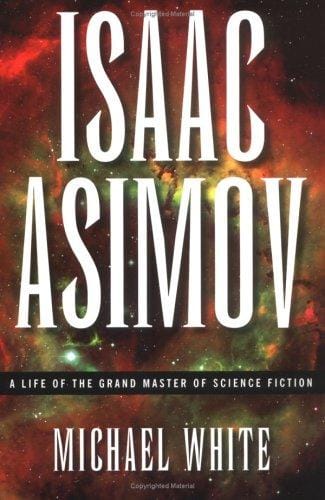Deception Point: Dan Brown’s High-Stakes Techno-Thriller Explored
An in-depth look at Dan Brown’s Deception Point, covering story summary, characters, themes, and why the novel still thrills tech and conspiracy fans.

Introduction
Dan Brown’s 2001 thriller Deception Point propels readers into an adrenaline-charged collision of cutting-edge science, covert politics, and relentless action. Long before The Da Vinci Code turned Brown into a household name, this standalone novel showcased the author’s flair for weaving real technologies with speculative twists. By tapping into public fascination with NASA, meteorites, and political subterfuge, Deception Point remains a go-to recommendation for fans who crave page-turning suspense anchored in plausible science.
More than twenty years after its release, the book is still frequently discovered by new readers who appreciate its breakneck pace and cinematic set pieces. The story’s combination of Arctic desolation, Washington intrigue, and high-tech gadgetry feels surprisingly contemporary, especially in an era when misinformation and scientific skepticism dominate the headlines. This article offers a spoiler-free overview of the plot, characters, themes, and lasting impact of Deception Point, helping you decide whether it belongs on your reading list.
Plot Overview (Spoiler-Free)
The novel opens with NASA teetering on the brink of losing public funding after a series of expensive failures. Salvation appears in the form of a massive meteorite discovered beneath the Milne Ice Shelf in the Arctic Circle. Stunningly, the rock contains fossils that may offer the first evidence of extraterrestrial life, a revelation poised to reshape human history and rescue the beleaguered space agency.
To authenticate the find, the White House dispatches Rachel Sexton, an intelligence analyst and daughter of a presidential candidate committed to dismantling NASA. She joins a team of civilian scientists led by charismatic oceanographer Michael Tolland. As media frenzy builds, strange inconsistencies surface at the remote research site, suggesting the discovery might not be what it seems. Soon, Rachel and her companions must navigate a deadly conspiracy involving black-ops assassins, classified technology, and an agenda that stretches to the highest levels of government.
Main Characters
Rachel Sexton is an ideal protagonist for a techno-thriller: trained in data analysis, refreshingly skeptical, and emotionally conflicted by her father’s political ambitions. Her commitment to objective truth drives the investigation forward even as her personal safety unravels. Readers often compare her resourcefulness to that of Brown’s later hero, Robert Langdon.
Michael Tolland provides both romantic tension and an accessible conduit to scientific explanations. As host of a popular documentary series, he excels at breaking down complex topics, which allows Brown to slip in chunks of real scientific detail without slowing momentum. Supporting figures like charismatic astrophysicist Corky Marlinson, glaciologist Norah Mangor, and enigmatic administrator William Pickering each play crucial roles in deepening the mystery and raising the stakes.
Key Themes and Motifs
At its core, Deception Point examines the fragile relationship between science and politics. Brown illustrates how data can be manipulated to serve competing narratives, echoing modern discussions about climate change, space exploration budgets, and media spin. The novel also explores the ethics of deception: when, if ever, is it permissible to mislead the public for a perceived greater good?
Another recurring motif is humankind’s hunger for cosmic connection. The possibility of extraterrestrial life sparks wonder and fuels budget debates, underscoring how scientific discovery can instantly transform social priorities. Brown juxtaposes that optimism with the darker reality of institutional self-preservation, reminding readers that revolutionary ideas often threaten entrenched power structures.
Science & Technology Accuracy
Dan Brown is known for blending fact and fiction so tightly that readers race to their browsers to verify what is real. Deception Point references genuine technologies such as radar-based ground-penetrating sensors, fast-attack helicopters, and classified DARPA research. While some liberties are taken—particularly with the meteorite’s fantastical properties—most of the hardware and scientific principles are grounded enough to keep suspension of disbelief intact. This realism is a large part of why STEM-minded readers continue to endorse the novel.
Pacing and Style
The book employs Brown’s trademark short chapters, cliff-hanger endings, and multiple viewpoints, creating a cinematic tempo that begs to be read in long sittings. Technical explanations are delivered through dialogue or visual demonstrations rather than dense exposition, ensuring that even casual readers can follow the science without dropping the narrative thread. Critics occasionally dismiss the prose as functional, yet few deny its efficiency at generating suspense.
Reception and Legacy
Upon publication, Deception Point debuted near the top of bestseller lists and quickly garnered translation deals worldwide. While it has never matched the cultural phenomenon of The Da Vinci Code, many longtime fans cite it as Brown’s most tightly plotted work. It has influenced successive techno-thrillers that balance hard science with conspiratorial stakes, and it frequently appears on lists of novels ripe for big-budget adaptation. Rumors of a film or streaming series surface every few years, attesting to the story’s enduring cinematic appeal.
Conclusion
Readers looking for an escapist blend of high-stakes politics, plausible science, and nonstop action will find Deception Point a rewarding ride. Its compelling heroine, topical themes, and relentless pacing make the novel feel as urgent today as it did in 2001. Whether you are new to Dan Brown or revisiting his back catalog, this techno-thriller offers a master class in how to turn scientific curiosity into edge-of-your-seat storytelling.



